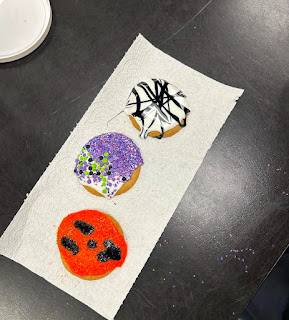In a society that’s oriented toward technological advances and the shifting racial, cultural, and religious dynamic, it’s easy to assume that discrimination and profiling are things of the past. History books often outline the struggles of Rosa Parks, and Black History Month is an event held to commemorate the trials and tribulations minorities underwent to gain the same opportunities and treatment as the majority.
As distant as these issues may seem to two twenty-first century teenage girls, the bitter taste of discrimination and profiling (and not just the racial kind) lingers. Social discrimination based on dress, appearance, religious affiliation, or skin color is still a part of modern society.
“In this society, I guess image is very important. What you think of yourself is also very important. Prejudice is sensationalized in today’s society,” said senior Keith Fernandes.
While we were selling ads over the summer, we thought nothing of walking into a small restaurant to get drinks. The sign by the door stated that the restaurant would close at five. The second we walked in, twenty pairs of eyes turned to us, the only minorities in the place. And not just the casual, cursory, who-just-walked-in stare, but the what-are-they-doing-here stare. The worker by the door, without saying a word to us, quickly went to get the owner. The owner came out and advanced towards us, a clear non-verbal sign that meant “Get out.”
“We’re closing early” was her stiff explanation. The customers sipping their pink, glittery tea just watched as we were—quite literally—pushed out the door. When we were outside, we looked at each other, shocked and unsure if the events that just happened actually occurred. We surveyed each other, quickly noticing the similarities that we mirrored. We looked different from everyone else in that restaurant with our black hair and tanned skin. Other than that, we looked the same as everyone else—jeans, blouses, cardigans—dressed semi-professionally.
Pulling the race card or even the I’ve-been-profiled-and-or-discriminated card is tough because one would think it’d rarely happen in this day and age, but it was the unspoken consensus between the two of us. Looking at our phones and seeing that the time was only 4:40 only confirmed our suspicions.
For the first time in a long time, we felt different from everyone else, and not just because of our dreamboat personalities. All our lives, we’d proudly acknowledged our differences, but, for the first time, we felt that they were hindrances. Standing out there in the hot humidity, kicked out not for poor conduct but because of someone’s cursory judgment of us made us feel degraded. Sub-human.
As shocking as this was for us, the hard reality is that these things happen every day. We don’t know if we were discriminated because of our skin color or the impression we were giving off, but discrimination takes place in more forms than just racial. Though women continue to make the gender ratio in the workplace 1:1, some are being discriminated for their sex. Discrimination even goes so far as to paying women less than men for the same amount of work. In 2011, it was found that, on average, a twenty-five-year-old woman earns $5,000 less than a twenty-five-year-old man.
Religious discrimination also exists in the workplace, such as for people who express their religious beliefs through the way they dress, such as with Sikh men (and sometimes women) who wear a turban and Muslim women who wear a headscarf. Religious practices have also disallowed some from participating in extracurricular activities. The Quebec Soccer Federation has a ban on turbans, leaving hundreds of young, gifted players unable to play unless they compromise their religious practice.
Similar to being singled out and barred in the Soccer Federation, airport security practices have been known to target minorities. Those targeted include not only Middle Easterners but also Hispanics, blacks, and other minorities. Practices calling for random checks on people who display suspicious behavior are now being used to target minorities who seem to fit the stereotype of their race.
“If you look like a certain stereotype, people will think you are that stereotype,” said junior Angela Perkinson. This concept that discrimination and false stereotypes are a thing of the past has routinely been proven to be false as racial profiling is perpetuated in airports, the workplace, the field, and in regular day-to-day life.
In a world where everything is superficial and based on appearance, it’s hard not to see how discrimination fits into society. Not only does it still exist but it occurs regularly. The bottom line is that discrimination can only be stopped once recognized and acknowledged for what it is.























